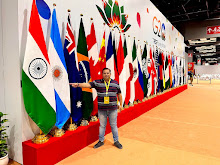new delhi,akash dwivedi-As reminder of a major health hazard and risk to environment on the eve of the 'World Earth Day', an ASSOCHAM-Frost & Sullivan study has said that India's electronic waste is likely to reach 30 lakh metric tonnes (MT) per year by 2018 from the present level of 18.5 lakh metric tonnes (MT) with Mumbai being the largest contributor to the problem. According to the study, India’s produces nearly 18.5 Lakhs MT of electronic waste every year. Mumbai (1,20,000) tops the list in generating e-waste followed Delhi-NCR (98,000) and Bangalore (92,000) says the ASSOCHAM paper. Chennai, Kolkata, Ahemdabad, Hyderabad and Pune find a place in the ladder, at 67,000, 55,000, 36,000, 32,000 and 26,000 metric tonnes per year respectively, reveals the study. Delhi-NCR figures among top electronic waste generating cities in India, with a ‘garbage output’ of 98,000 tonnes annually, according to a study jointly conducted by The Associated Chambers of Commerce and Industry of India (ASSOCHAM) and Frost & Sullivan and released on “Earth Day” on April 22. The sad part is that mere 2.5% of India's total e-waste gets recycled because of poor infrastructure and legislative framework which lead to a waste of diminishing natural resources, irreparable damage of environment and health of the people working in industry. Over 95% of e-waste generated is managed by the unorganised sector and scrap dealers in this market. In India, about 5 lakhs child labours between the age group of 10-14 are observed to be engaged in various e-waste (electronic waste) activities, without adequate protection and safeguards in various yards and recycling workshops. Informal recycling industry often employs children to dismantle electronic waste. ASSOCHAM's report strongly advocates legislation to prevent a child's entry into this labour market. The chamber has also strongly advocated the need to bring out effective legislation to prevent entry of child labour into its collection, segregation and distribution, reveals the study. Computer equipment accounts for almost 70% of e-waste material followed by telecommunication equipment (12%), electrical equipment (8%) and medical equipment (7%). Other equipment, including household e-crap account for the remaining 4%, it said. "It is a matter of concern that most of our e-waste is handled in the most unscientific way by scrap dealers, who may be inadvertently handling radioactive material, as was brought to light in the past in a Mayapuri (west Delhi) case," ASSOCHAM Secretary General Mr D S Rawat said while releasing the paper. “E-waste typically includes discarded computer monitors, motherboards, Cathode Ray Tubes (CRT), Printed Circuit Board (PCB), mobile phones and chargers, compact discs, headphones, white goods such as Liquid Crystal Displays (LCD)/ Plasma televisions, air conditioners, refrigerators and so on. According to the report, government, public and private industries contribute more than 70 per cent of e-waste while 15% comes from households. Televisions, refrigerators and washing machines make up the majority of e-waste generated, while computers make up to 20 per cent and mobile phones 2 per cent. Domestic e-waste including computer, TV, mobiles and refrigerators contain over 1,000 toxic material, which contaminate soil and ground water. Exposure can cause headache, irritability, nausea, vomiting and eyes pain. Recyclers may suffer liver, kidney and neurological disorders”, said Dr. B K Rao, Chairman of ASSOCHAM Health committee releasing the ASSOCHAM paper. These products have components that contain toxic substances like lead, cadmium, mercury, hexavalent chromium, plastic, PVC, BFRs, barium, beryllium, and carcinogens like carbon black and heavy metals. This deadly mix can cause severe health problems in those handling the waste, adds Dr. Rao. Printed circuit boards, for instance, contain heavy metals like antimony, gold, silver, chromium, zinc, lead, tin and copper. The method of extracting these materials from circuit boards is highly hazardous and involves heating the metals in the open. Informal recyclers use primitive and hazardous methods like acid stripping and open air incineration for processing e-waste. These methods are highly unsafe and cause pollution by releasing toxins from e-waste into the environment. However, most of these products can be recycled, refurbished and redeployed going down the value chain and reused by a bit of reconstruction process, reducing overall impact on the environment, he said. The biggest e-waste recycling market in India is Delhi and approximately 30.0-40.0 percent of the e-waste in India lands here. Bangalore and Chennai are the next big e-waste markets. Chennai is the fourth largest e-waste generating city and approximately 5.0 MT of e-waste is generated every day in the Chennai Metropolitan area. Almost 60.0 percent of the e-waste generated in Chennai is desktop computers. Most of the e-waste ends up with the informal sector because of the lack of regulations and improper collection centers, due to which scrap dealers have doubled in the city. One kilogram of copper scrap is priced at INR 350-INR 400, and one kilogram of aluminum scrap at INR 110-INR 130. Unsafe and crude methods are employed by the informal sector for e-waste recycling. Though Chennai has fully functional e-waste recycling units, it is not in proportion to the e-waste generated in the city. Though the e-waste generated in each of the cities might vary, the fact is that approximately 90.0 percent of the waste ends up with the informal sector.
Thursday, April 21, 2016
Subscribe to:
Post Comments (Atom)










0 comments:
Post a Comment